How to Make Self-Rising Flour
This post may contain affiliate links. Please read my disclosure policy.
Self-rising flour is a staple ingredient in many southern recipes, from biscuits to cobblers! This recipe shows you how to make self-rising flour with just 3 simple ingredients for this easy homemade substitute!
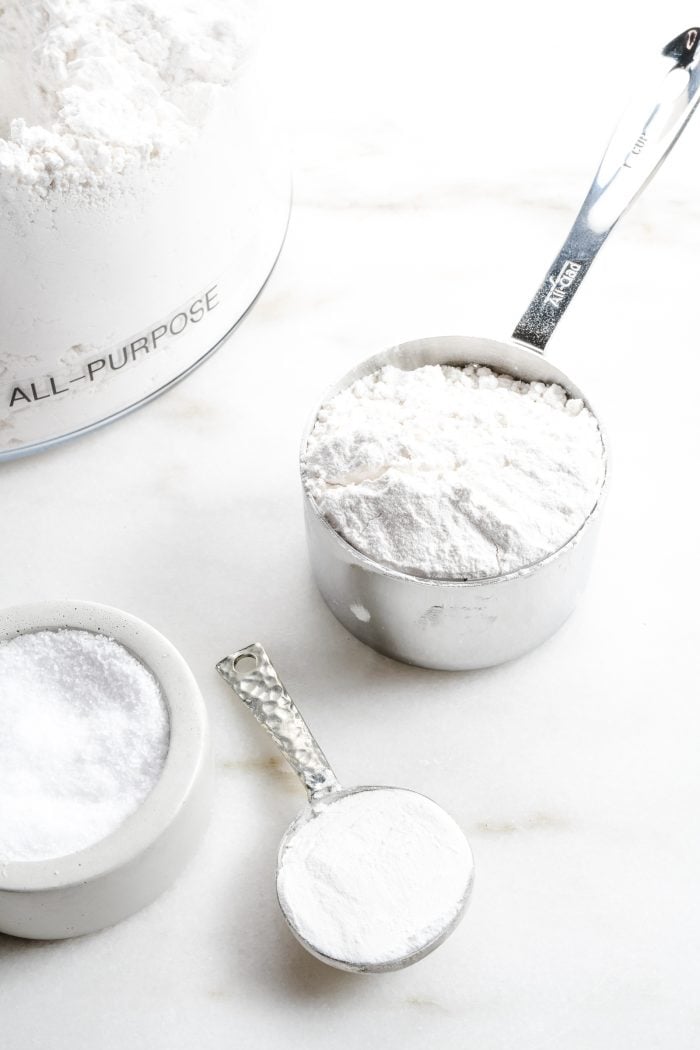
Have you ever started a recipe that called for self-rising flour and realized you don’t have any? It is a frustrating thing when that happens! That’s when this simple homemade substitution for self-rising flour comes to the rescue. It’s so quick to make with just a few ingredients!
Self-rising flour is a combination of all-purpose flour (also referred to as plain), baking powder, and salt. It’s often used in recipes with no leavening agents (such as baking powder, baking soda, or yeast) and reduces the number of ingredients needed.
Difference Between Self-Rising and All-Purpose Flours
The difference between the two flours is simple. Self-rising already has the leavening agent included and all-purpose does not. All-purpose flour must have a leavening agent added to it in a recipe for it to rise.
How to Make Homemade Self-Rising Flour Substitute
If you come across a recipe that uses self-rising, you can make it yourself quickly and easily using 3 simple ingredients that you most likely already have in your pantry.
Ingredients
Be sure to see the recipe card below for the full listing of ingredients, instructions, notes, and estimated nutritional information.
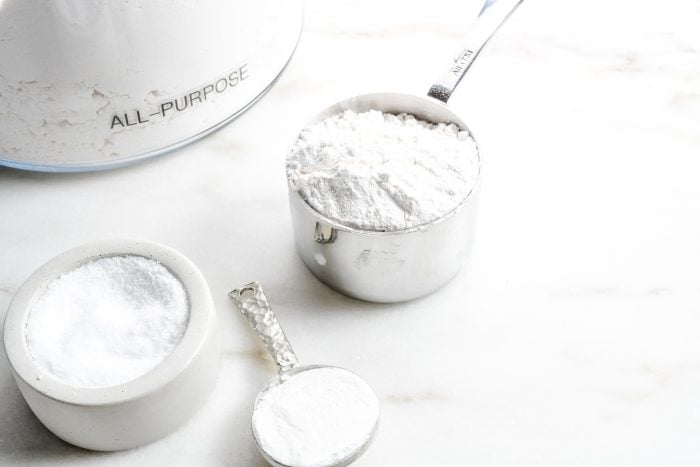
- All-purpose Flour
- Baking Powder
- Salt
I’ve included the amounts to make a One Cup recipe, or a Small Batch, as well as the amounts needed to make a Large Batch recipe too.
One Cup Recipe:
For each cup of flour, whisk together 1 1/2 teaspoons of baking powder and 1/4 teaspoon of salt. Make sure to whisk all these ingredients together well so that the baking powder and salt are evenly distributed within the flour.
Small Batch Self-Rising Flour Recipe
1 cup all-purpose flour
+
1 1/2 teaspoons baking powder
+
1/4 teaspoon salt
Large Batch Recipe (Makes 4 Cups)
To make a large batch recipe, add flour, baking powder, and salt in the above amounts to a large mixing bowl. Whisk to combine so that all ingredients are evenly distributed. Use or store in an airtight container.
Large Batch Self-Rising Flour Recipe
4 cups all-purpose flour
+
6 teaspoons baking powder
+
1 teaspoon salt
Storage Tips
To store: Add to an airtight container and store in the pantry for up to 6 months.
Uses for Self-Rising Flour
This flour is used in so many quick and easy Southern recipes.
It has become a staple ingredient in my kitchen for the perfect buttermilk biscuit, buttermilk pancakes, cinnamon roll biscuits, waffles, easy peach cobbler, quick bread, and more.
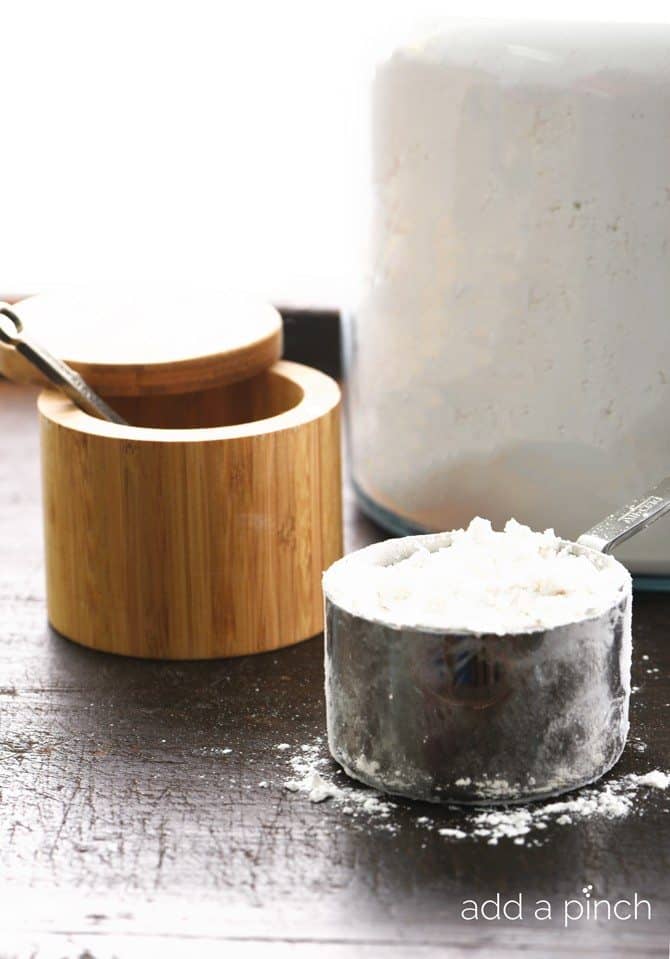
More Useful Substitution Recipes
Here’s the printable recipe card for making my self-rising flour substitute. I hope you find it as helpful as I do!
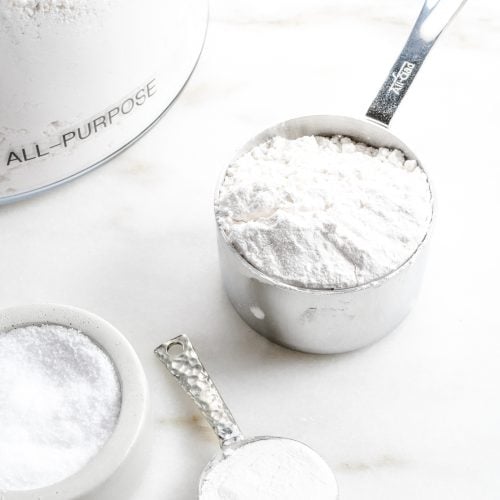
How to Make Self-Rising Flour
Ingredients
- 1 cup (120 g) all-purpose flour
- 1 1/2 teaspoons (6 g) baking powder
- 1/4 teaspoon (0.6 g) kosher salt
Instructions
- Measure all ingredients and whisk to combine.
Notes
- 4 cups all-purpose flour
- 6 teaspoons baking powder
- 1 teaspoon salt
Video
Nutrition
Nutrition information is automatically calculated, so should only be used as an approximation.
Enjoy!
Robyn xo
Originally published April 2012.
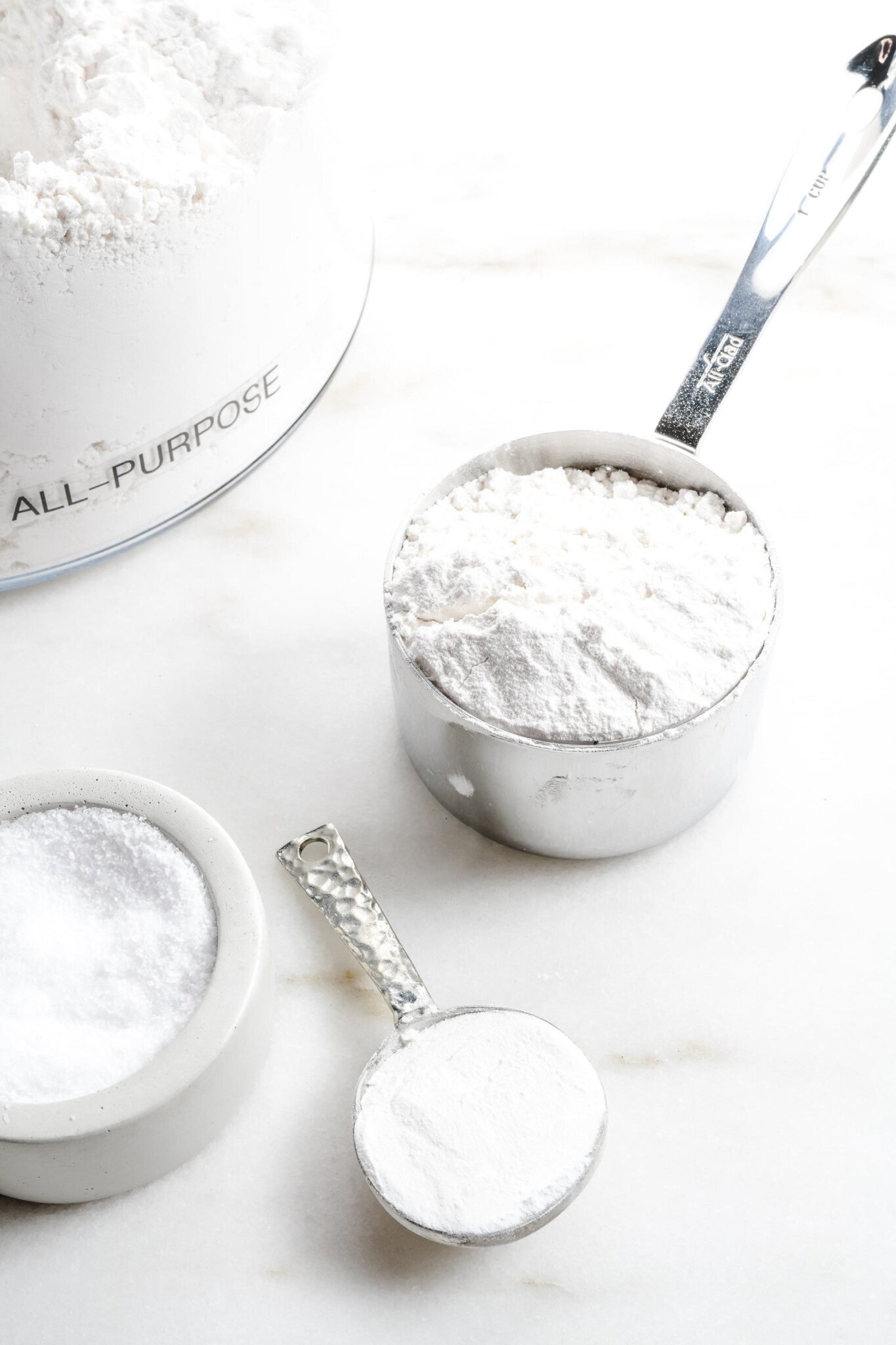

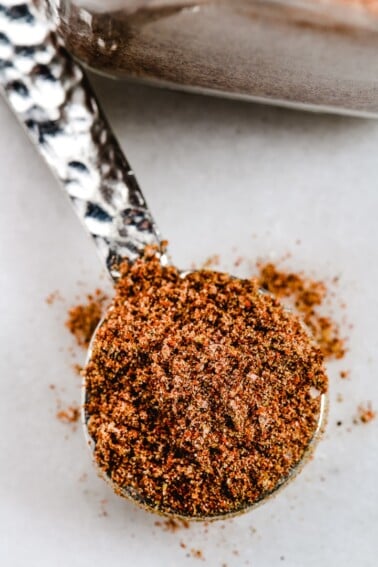
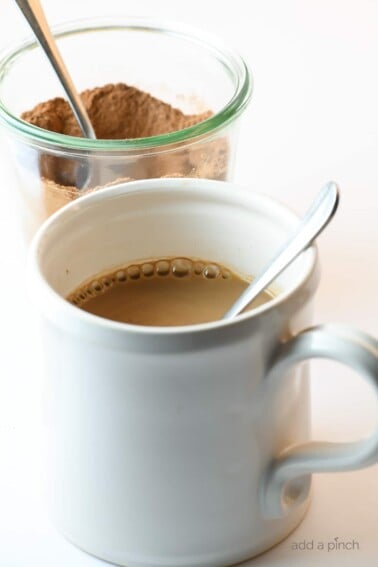
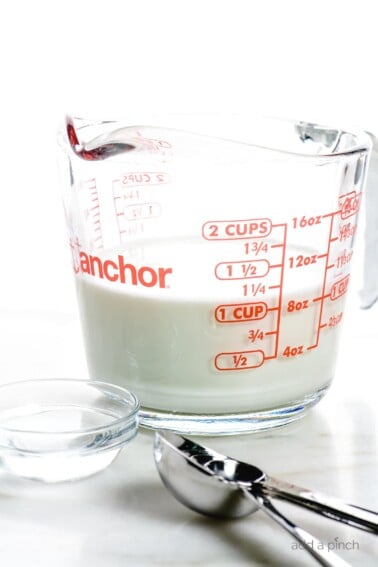

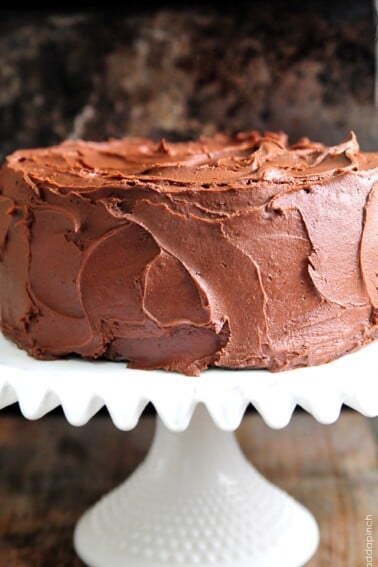
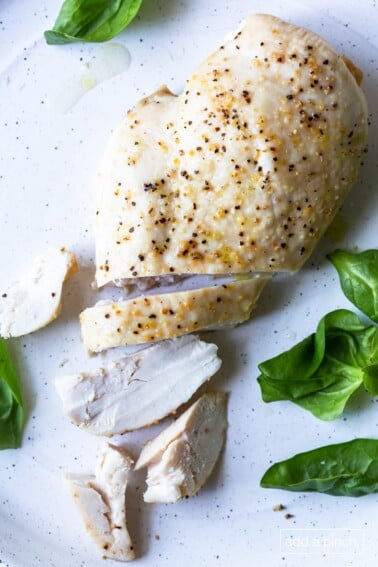
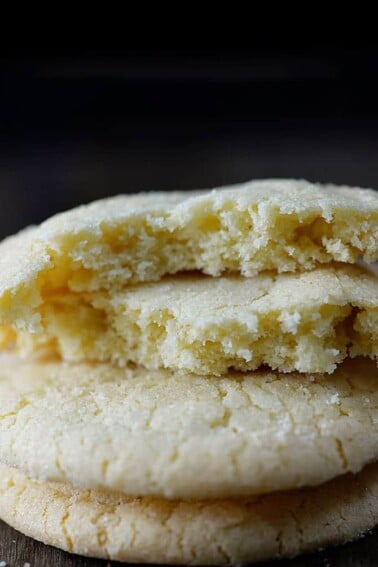

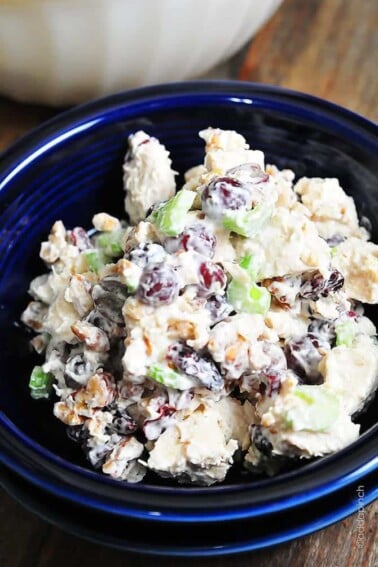










To reduce the recipe by 4 – 1/4 cup flour – 3/8 tspn of baking powder and pinch of salt.
If I wanted to make a self-raising flour good for a 1/4 cup. What are the measurements for all these three ingredients?
Why don’t you make for 1 cup, then take 1/4 cup from the final mix?
Needed self rising flour for fried chicken will see hoew it works Biscuits lioked interesting mine never rise so will use this flour recepie
Actually making your own self-raising flour is better than buying the packed ready-made one from the store. One reason is that the leavening agent in the ready-made ones could expire and go stale before the actual expiry date of the flour itself which is found on the package. It did not happen to me yet but I have read comments by a few home bakers regarding self-raising flour. Also, as Regine says the ready-made ones are too salty and she is right. If you make your own then you have contol on how much salt you should put. As for Stacey’s concern, no cause for concern about the chemistry involved. I have always made my own self-raising flour and it worked magnificiently every time.
I guess it’s the baking powder that makes it self rising
This is great! I will usually just skip a recipe if it calls for self-rising flour- I only use whole wheat. I’m going to play around and see how this works with whole wheat flour and maybe give some recipes a try that I wouldn’t have before.
I’m so glad you found it helpful! There are so many great recipes using self-rising flour that I bet will work beautifully with whole wheat! xo
This is great. I actually hate self rising flour because I find it too salty. So it is good I can make my own and skip or reduce the salt. Thanks!!!!
I’m not sure it will work out,as,well . Chemistry plays a big part in baking.
I seen that some of you didn’t know how much was in a cup so here“s a little table that might help . when Making Self Rising Flour or any thing else .
Tablespoon Conversions
16 tablespoons = 1 cup
12 tablespoons = 3/4 cup
10 tablespoons + 2 teaspoons = 2/3 cup
8 tablespoons = 1/2 cup
6 tablespoons = 3/8 cup
5 tablespoons + 1 teaspoon = 1/3 cup
4 tablespoons = 1/4 cup
2 tablespoons = 1/8 cup
2 tablespoons + 2 teaspoons = 1/6 cup
1 tablespoon = 1/16 cup
2 cups = 1 pint
2 pints = 1 quart
3 teaspoons = 1 tablespoon
48 teaspoons = 1 cup
Sorry had to re do some of Spelling . All good now . Thank you .
This is a Great Recipe I just Double it if I need 2 cups or if I need more I double that to get 4 cups works great . Thank’s for a Great recipe . I never buy at the store any more . I thank this is better .
Do y just double the recipe for 2cups?